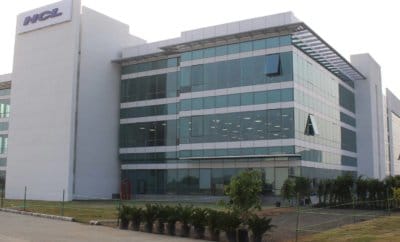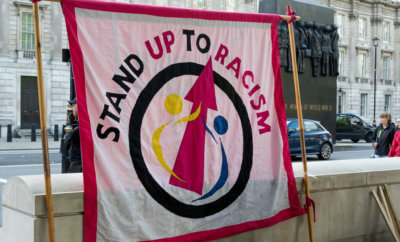Crime
Charlottesville’s Lingering Shadow

Alt right demonstrators in Charlottesville in August 2017.
Photo: Anthony Crider/CC
The violence in Charlottesville was a wake-up call for many Indian Americans.
University of Virginia Prof Geeta Patel began the first day of class during the new academic year at the end of August somewhat unusually by screening the Bollywood film Delhi 6.
Patel, who is the director of the Charlottesville university’s India program and teaches Middle Eastern & South Asian Languages and Cultures, says: “I screened the film Delhi 6 because it deals with violence and reconciliation between different religious communities in old Delhi. Of course, the film is much more complicated, but that initiated a discussion on why and how violence starts, how difference is understood as a blessing and as well as the site for antagonism.”
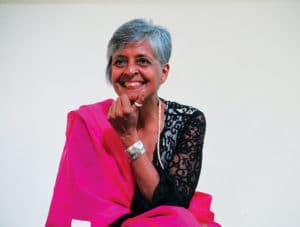
University of Virginia Prof Geeta Patel: “Difference is understood as a blessing and as well as the site for antagonism.”
Patel, along with the other faculty at the University of Virginia, were tasked this year with an additional responsibility of reassuring students, while encouraging an atmosphere for dialogue.
A month after white-supremacist protests erupted in the city, there was still a sense of shock and discomfort among the students. Patel says: “The president of the University and the dean of Arts and Sciences asked all faculty to spend the first week discussing the events in classes. Faculty did things as diverse as talking to students about their own sense of danger and safety.” She adds, “I also chose to talk about the ‘Not in my name’ movement in India.”
Charlottesville, a university town known as an educational and cultural center in Virginia, found itself at the center of a national crisis after a white supremacist protest in August. The protesters arrived at the University of Virginia carrying torches and weaponry and shouting “white lives matter” and “blood and soil” slogans.
The march turned violent as the protesters clashed with counter-demonstrators. A car ploughed into a crowd of anti-racist protesters, killing a 32-year-old woman and injuring 19 others. Two state troopers were also killed when a police helicopter following the protest crashed.
No one quite believed that such an event could unfold in Charlottesville, a town brimming with youth and a sizeable immigrant population. According to the 2015 American Community Survey, 70% of the city is white, 19% African American, 7% Asian and 5% Hispanic.
The city has fewer than 500 Indians.
Braham Singh, a northern Virginia resident who works as senior vice president of global product management at Reliance Communications, says: “Immigrants in the vibrant Virginia area have changed its color to a Democrat leaning area. Charlottesville is a university town with a young, diverse and liberal population. Possibly the reason the white supremacists chose that city to make their point. Charlottesville is the last city one would suspect of having any significant anti-immigrant feelings. The troublemakers had to be shipped in. They were not natives.”
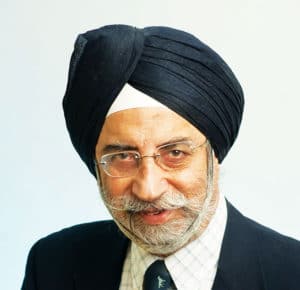
Satyendra Huja
Satyendra Huja, the Indian origin ex-mayor of the city, concurs: “Most of the neo nazies and alt-right groups were from out of town.” While the initial protests over confederacy symbols in America had little participation from the Indian community, as the situation escalated, many minorities, including Indians, began seeing it as a struggle for their own rights. Huja who served as mayor of Charlottesville for two consecutive terms in 2012 and 2014, says, “The turn of the events was unfortunate, but was a result of a great deal of tension that exploded.”
Indian students, however, soon recognized the enormity of situation and how it potentially targeted them too. Vignesh Sastri, president of Indian Student Association at the University of Virginia, recalled the horror:
“That day was pretty horrific. Before the day of protests, there was a large group of white supremacists that gathered on the UVA campus, called ‘grounds.’ A small number of students went to counter-protest, but they were met with violence. The next day was a tragedy. The Alt-Right supporters seemed to be everywhere throughout Charlottesville.”
He adds, “There were protesters of all color during those couple days, all united in the fight against white supremacy.”
The violence has affected the psyche of Indian students, Sastri says: “I think Indians, like all other minority groups, have some sense of insecurity. It is scary to go downtown or to leave the campus, because there are concerns about safety and fears of what may happen.”
Minorities are especially troubled by the slow response of police to the violence.
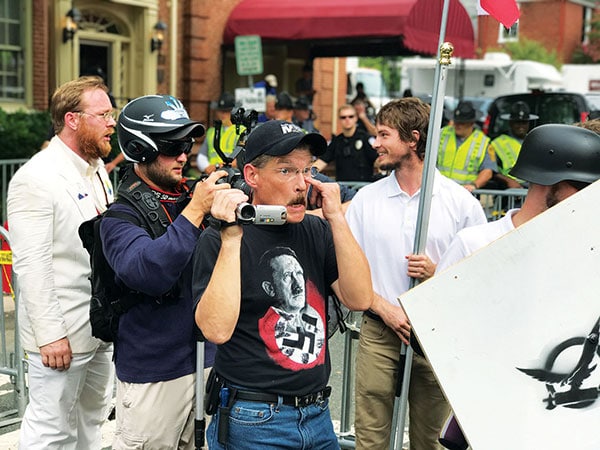
Alt right demonstrators in Charlottesville in August 2017. Photo: Anthony Crider/CC
The situation remains volatile. Two weeks into the new session, hundreds of students, faculty and community members gathered at the university to shroud a monument honoring Thomas Jefferson, founder of the university and also a former U.S. president. They chanted slogans “No Trump, No KKK, no racist UVA.”
University President Teresa A Sullivan denounced the protesters: “I strongly disagree with the protesters’ decision to cover the Jefferson statue. I also recognize the rights of those present at the protest to express their emotions and opinions regarding the recent horrific events that occurred on our grounds and in Charlottesville. Our community continues to heal, and we must remain respectful of one another if substantive progress can be made on addressing the many challenges and opportunities that we all face.”
THE GROWING INDIAN INVOLVEMENT
While many Indians may have been oblivious to the controversy over the confederacy, it didn’t take them too long to rally and speak up about the threat to democratic rights. Shilpa Dave, assistant dean, College of Arts & Sciences at the University of Virginia, says: “At no point should Indians believe that the matter does not concern them. As Indian Americans we are allied to American democracy, we have benefited from the civil rights and a movement like this one that points towards politics of exclusion affects all of us.”
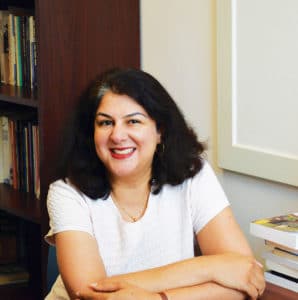
Shilpa Dave
“In the past few weeks I have been talking to my students about inclusion and how it should be allied with all causes such as LGBT, Black Lives Matter, DACA community and many others,” Dave said.
Geeta Patel says: “I think that Indian immigrants varied a great deal in their position on the violent right. Some of them believed that the violent right had the ‘right’ to come and be there. Some Indian immigrants were very clear — they were at the protests from the beginning, they stood against the right-wing aggression and violence. But I think that most Indian immigrants ended up understanding by the end that their rights had been violated too.”
The tension still simmers, says Sastri: “There has been higher tension since the events from last month. Minority communities and their leaders are doing their best to not only make their constituents feel safe, but also figure out a solution to this implicit tension.”
AGAINST ALL IMMIGRANTS
Many locals in the area recognize the threat posed by the alt right to the freedoms and liberties of minorities. Patel says: “I think many immigrants understood immediately that they were a target of the violence too. In fact, the previous march by the Ku Klux Klan in Charlottesville, which was much smaller, specifically had posters and slogan directed against all immigrants — letting them know that they are not wanted and that they should go home.”
She adds: “The irony of course is that the white people in both marches all come from immigrant families. Many immigrants were worried, frightened, anxious, because they knew that violence might be directed at them. These people came to Charlottesville like an invading army. They carried a great deal of weaponry. Indian immigrants, have been killed by them. So of course many of them would be afraid.”
But as the diversity dialogues and conversation on inclusion were initiated, Patel admits that she was surprised by some divergent views:
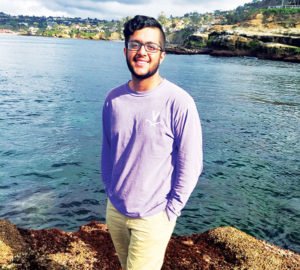
Vignesh Sastri: “There were protesters of all color during those couple days, all united in the fight against white supremacy.”
“There are also Indian immigrants who do support them in different ways. I found this to be true of some of my students — who believed that the violent right should have the right to free speech. Free speech at the end of a gun is not free speech, but at least some Indian immigrants don’t seem to fully appreciate what that means.”
Braham Singh, a long-time resident of Virginia, says he has encountered that sentiment: “As we know, a number of Indians voted Trump. For one reason and one reason alone. They share a common Islamophobia. So, I ask them, when they are accosted by white supremacists baying for blood, do you think the mob will first check whether you’re Hindu or Muslim?”
Singh believes that many Americans, and not just Indians, misunderstand the issue: “The incident should serve as a wake-up call to many Indian Americans who thought that they should rally behind Trump and ideals of white supremacy.”
Back on ground zero, the debate persists. Sastri says Indian students are divided over the defacement of Thomas Jefferson’s statue by protesters, who accuse him of owning slaves: “Some believe it was an acceptable protest, while others believe it might have been too much and too disrespectful. However, we all agree that the administration is not doing enough to quell the situation.”

